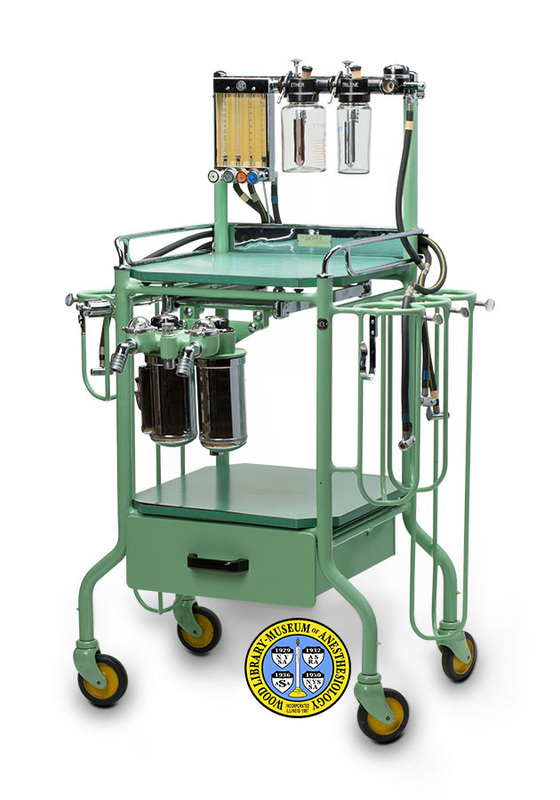Boyle Bottle
Boyle Bottle, circa 1920s
Henry E. G. Boyle, OBE, FRCS, DA (1875-1941) devised a portable anesthesia machine in 1917 incorporating the “Boyle Bottle” for vaporizing any liquid anesthetic. A glass bottle was used as a vaporizing chamber. Some of the gas was channeled through the bottle, near or below the surface of the liquid using a plunger, thereby adjusting the concentration of liquid anesthetic being vaporized and delivered to the patient. Although the concentration of gas was more controllable with this method, the exact amount the patient received was still not measurable. Heat loss during vaporization caused the liquid anesthetic to cool down and decrease the concentration of the vapor. Anesthetists tried to control this by placing the Boyle Bottle in a pan of warm water during use, but glass was a poor conductor of heat.
Boyle apparatus / British Oxygen Company
Boyle introduced this anesthesia machine in 1917. It was a modification of the American-made Gwathmey-Woolsey apparatus. It was so successful that it remained in production for fifty years. It could administer nitrous oxide, oxygen, cyclopropane and carbon dioxide gases. Note the inline Boyle Bottle vaporizers to administer the volatile agents ether and Trilene.


